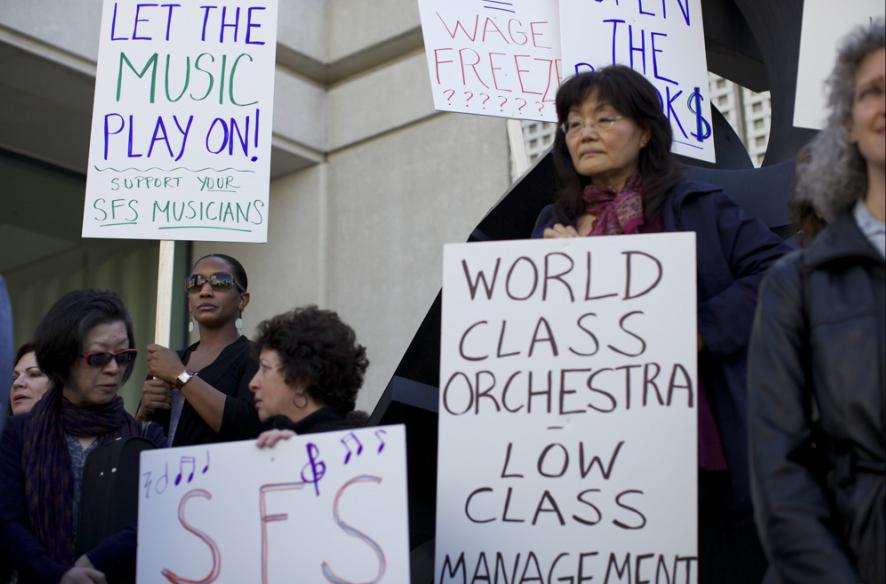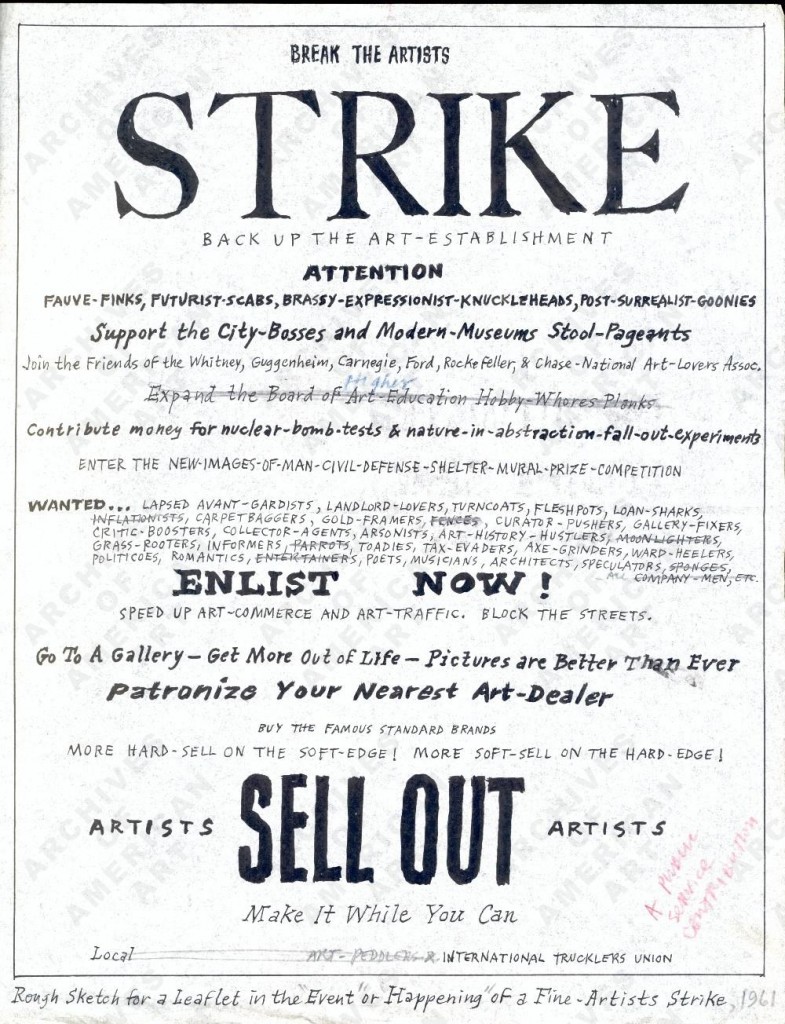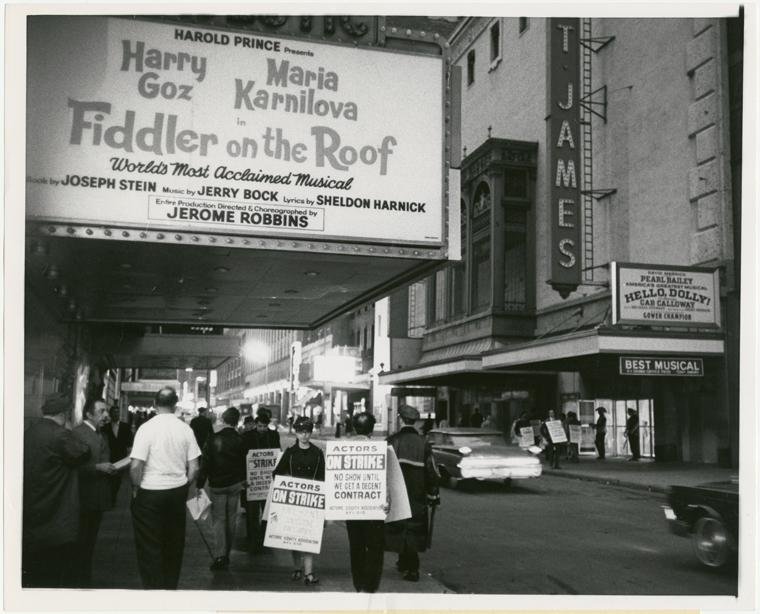In the summer of 2013, I facilitated a class in Brooklyn titled “Rights, Demands, and Radical Reimaginings: Art & Labor in the US.
The topic kept coming up in my own writing a lot lately and in many events I participated in or attended. The idea for this class was to spend some concentrated time looking at both historic and contemporary examples of many different kinds of artists (musicians, visual artists, performing artists, etc.) organizing around labor issues. My aim was for the class to bring together a variety of people who could make use of the information in their own lives and communities.
Some basic info about the class:
What:
Rights, Demands, and Radical Reimaginings: Art and Labor in the US
When:
Tuesday evenings, from 7.00-8.30 (or 9.00) pm
Aug 27 – Sep 24, 2013 (5 sessions)
Where:
Brooklyn, NY (see class reg for full details)
How:
Registration is required and there is a fee (sliding scale and barter available).
I also wrote a quick primer on some of the ways that artists were organizing around labor issues at the time. I was published both on Hyperallergic and Salon:
• How Are Artists Getting Paid?
Below is an archived version of the course description from the Skillshare website:
Who this class is for:
This class is for anyone interested in understanding how artists have organized in the past and present to get paid for their work, or to work in ways that resist traditional US labor frameworks. You’ll be given strategies and tools to help you reimagine the relationship between art and labor.
In this class we will look at:
-
historic and contemporary examples of artists organizing to get paid, access services (health insurance, unemployment insurance, etc), and/or gain control over how their work is displayed/presented
-
various types of artistic labor, some that traditionally garner payment, others that don’t
-
the drive to professionalize the arts
-
alternative organizing/working models
Class project:
All participants will be encouraged throughout to think about and imagine their own artists’ bill of rights, list of demands, or radical re-imaginings of the way that they engage in artistic labor.
Class description:
In the past century, artists working across disciplines have undertaken a variety of efforts to not only get paid a decent wage for their creative work, but also to gain access to services and protections that workers in other sectors have long enjoyed. Some of those artistic unions, guilds, associations, and collectives still exist or have echoes now, while many are struggling or long gone. Today, many artists are wondering what approaches they can take to resolve the long-standing difficulty of accessing capital through art-making.
Over 5 weeks, we will take a critical look at the connections between the arts and labor in the US. We’ll examine and discuss some historic and contemporary efforts across artistic disciplines to organize around and/or revolutionize arts and labor. We’ll also look at bigger questions about what it means to classify a variety of artistic activities as labor, as well as radical viewpoints that either reject art as a form of labor or view the arts as a space to test out labor practices that could impact all of society.
A Note About the Fee:
If you would like to take the class but the fee represents the primary reason why you cannot join, please contact me and we can discuss a sliding scale. I am also open to barter arrangements.
* The image at the top is from the spring 2013 strike by members of the San Francisco Orchestra (Photo: Deborah Svoboda/KQED)
Satrical poster sketch by Ad Reinhardt for 1961 Art Strike. (Source: Archives of American Art, Smithsonian Institution)
A photo of a 1968 actors strike in New York City. (Photo: NYPL Digital Gallery)
Week 1: Guilds/Academies/Unions/Free agents
A look at specific examples and trends in the US over the past 150+ years involving artists joining together to gain access to capital and/or services.
Week 2: Recent Organizing Efforts Among Artists in the US
We’ll look at specific recent examples, outside of traditional labor unions, of artists in the US working together to demand wages and/or services from government, arts organizations, and/or one another. Possible guest lecturer.
Week 3: Types of Artistic Labor
Typically some kinds of artistic labor have the potential to garner payment and others do not. What are the differences? How does receiving payment for some kinds of labor at different points in the process have the potential to influence the final product? Does that matter?
Week 4: Professionalizing the Arts
Can and should an avant garde artist expect to be paid a middle class wage by the dominant culture? How has the rise of professional development programs in place of grants for art-making, along with the massive increase in MFA programs, altered artists’ ideas and expectations of what a “career” in the arts should look like?
Week 5: Labor Alternatives
In the final week we’ll look at examples of individuals and groups that have rejected or attempted to build alternative models of making artistic work that stand, in part or fully, outside traditional labor frameworks.



